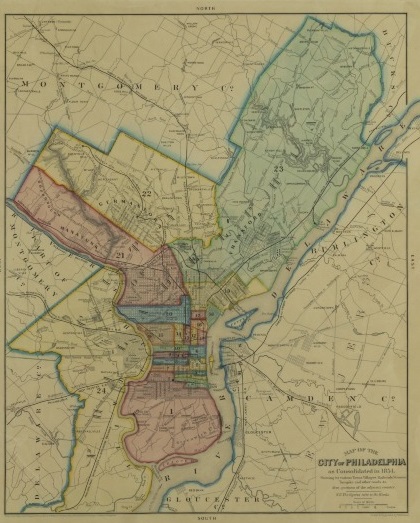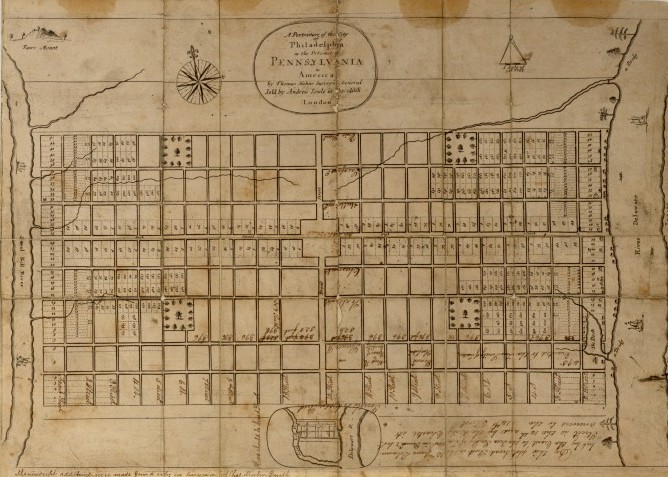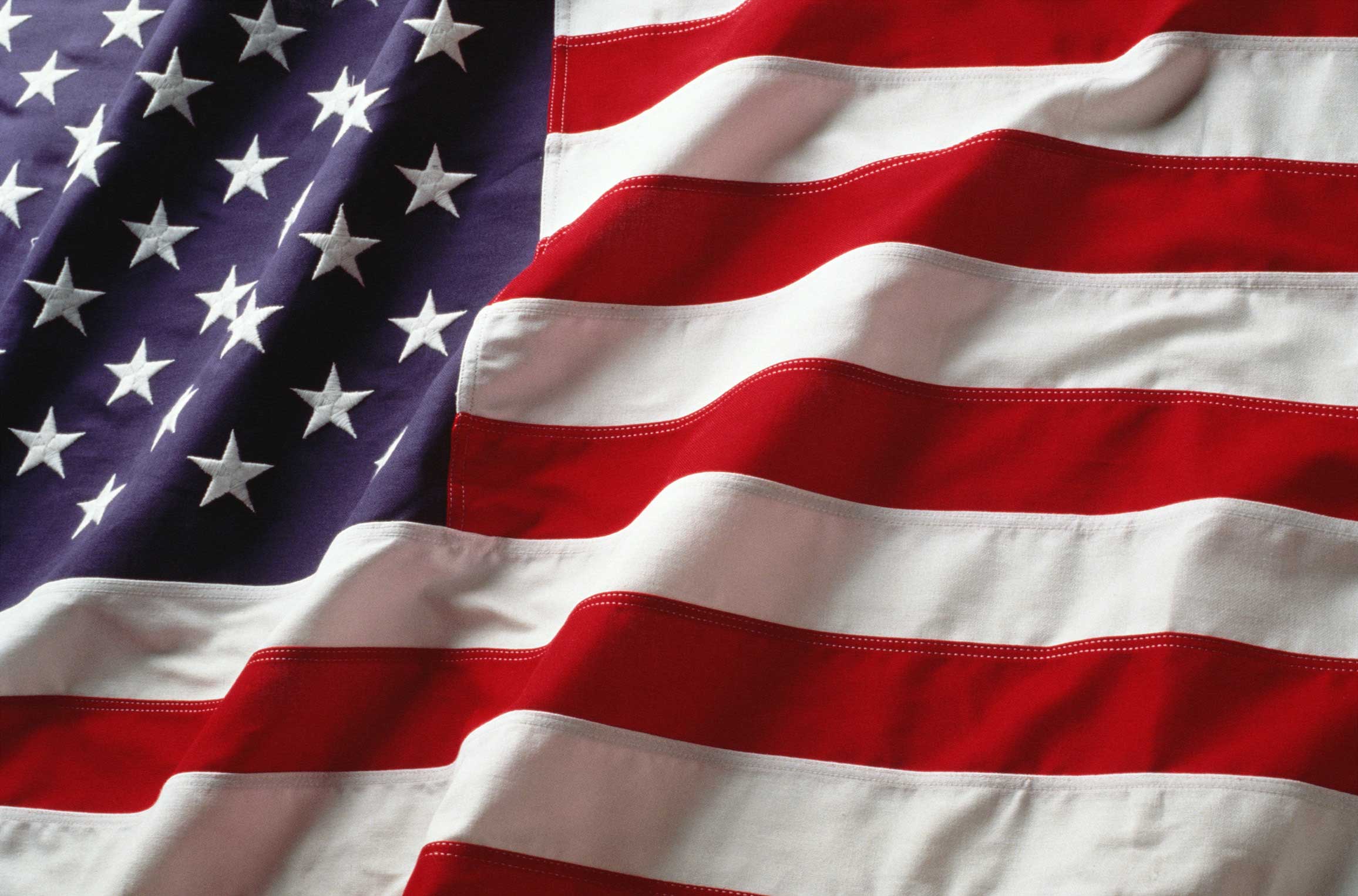Related Posts
- Buy Tickets for The Constitutional Walking Tour of Philadelphia – See 20+ Sites on a Primary Overview of Independence Park, including the Liberty Bell and Independence Hall
- Old City Hall
- Congress Hall
- William Penn Arrives in Philadelphia - This Day in History - October 29, 1682
- Northern Liberties
On This Day in History, February 2, 1854, Philadelphia passes the Consolidation Act of 1854, officially consolidating the over 20 cities and towns located in Philadelphia County into present day Philadelphia.

Two of the most important historical buildings in America sit on either side of Philadelphia's Independence Hall. To the east stands Old City Hall, to the west, Congress Hall. The buildings are famous as the meeting place of the United States Supreme Court and the United States Congress respectively in the 1790s while Philadelphia served as the Nation's Capital. But neither was built for the purpose they served during Philadelphia's time as Captial of the United States, but rather were built to serve local government functions. Old City Hall, as the name implies was once the City Hall of Philadelphia and included the city's courtroom. Congress Hall was built to be Philadelphia County's Courthouse. Such a distinction between city and county would seem strange to Philadelphians today. There is but one city in Philadelphia County, Philadelphia, and today there is no need for distinctions between the two, but it was not always this way.
On average, the historic cities on America's East Coast are much smaller in terms of area than newer cities to the West. While cities like Houston, Los Angeles and Phoenix sprawl for 100s of square miles, on the East Coast, cities like Boston, Baltimore, and Norfolk are all less than 100 square miles and the original area of New York City, once just the island of Manhattan is just 22 square miles. But the original area of Philadelphia was even smaller, when Penn arrived in Philadelphia he laid out a city that was just 1200 Acres, or less than two square miles! Despite its incredibly tiny area, Philadelphia quickly grew into the largest city in the American Colonies. As people from across Europe came to Penn's Philadelphia to partake in his "holy experiment" of religious freedom and escape persecution. The tiny area of Philadelphia became very densely populated, especially on the land closest to the Delaware River.
Philadelphia was the largest city in America when Independence was declared according to British estimates, but by the time America took it first Census in 1790, Philadelphia had been surpased in population by New York City. This ranking does not however tell the full story of Philadelphia's size; while New York did have nearly 5,000 more people than Philadelphia in 1790, those extra people were spread out across a city more than 10 times larger in area than Philadelphia. Also, as more and more people moved to Philadelphia, not only did Penn's city grow incredibly dense, but the areas just outside of Philadelphia also became large and urbanized cities in their own right as there was simply not enough room in Philadelphia for everyone. While Philadelphia was the second largest city in the 1790 Census, the 6th largest city was Northern Liberties, the city located just over the Northern city line of Philadelphia and the 10th largest city was Southwark, the city just over the Southern city line of Philadelphia. This means in the first census, three of the ten largest cities in the country were all located directly next to each other.
In the decades that followed, Philadelphia continued to grow and despite an area of less than two square miles would surpass over 100,000 in population and remained one of the five largest cities in America. Meanwhile cities like Northern Liberties, Southwark, Spring Garden which were direclty adjacent to Philadelphia, also grew and ranked among the ten largest cities in the country. Having so many people living with in so many geographically tiny adjacent cities was however filled with downsides. Every city had their own government, their own courts, their own schools, their own police, their own fire departments and on and on. It was difficult to coordinate infrastructure efforts between the cities and tons of money was wasted. As the population of Philadelphia County approached half a million people spread out across over 20 different towns, the system became untenable.
In 1854 an agreement was reached and all of the towns and cities located within Philadelphia County merged into present day Philadelphia. Overnight the area of Philadelphia grew from fewer than 2 square miles to 134 square miles. While Philadelphia still has by far the smallest area of any of the ten largest cities in America, it's over 70 times larger than the city than William Penn originally designed.
 Penn's Original Plan for Philadelphia, 1200 Acres from the Delaware River to the Schuylkill River, From Vine Street to South Street
Penn's Original Plan for Philadelphia, 1200 Acres from the Delaware River to the Schuylkill River, From Vine Street to South Street





